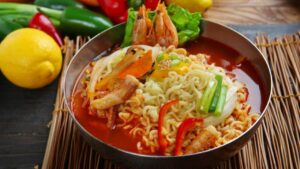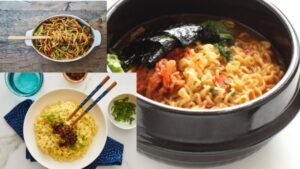Exploring the Vibrant World of Korean Cuisine
The flavors of Korean cuisine have captured the hearts of food enthusiasts worldwide, and India is no exception. Renowned for its bold spices, tangy sauces, and umami-rich ingredients, Korean food presents a symphony of flavors that tantalizes the taste buds and leaves a lasting impression. From spicy stews and sizzling barbecue to savory pancakes and delicate rice cakes, the diverse range of Korean dishes ensures there is something to delight every palate.
What sets Korean cuisine apart is its masterful emphasis on balance. Each dish is thoughtfully crafted to harmonize sweet, salty, sour, and spicy flavors, resulting in a culinary experience that is both satisfying and unforgettable. For Indian food lovers, the introduction of Korean food has opened up a new world of gastronomic exploration, blending familiar textures with exciting new tastes.
As the popularity of Korean cuisine continues to rise, more people are eager to recreate these vibrant flavors in their kitchens. The journey begins with building a pantry stocked with authentic ingredients that serve as the foundation of Korean cooking. From fermented staples like kimchi and gochujang (red chili paste) to essential condiments like soy sauce and sesame oil, these ingredients unlock the secrets of traditional Korean dishes.
Whether you’re a seasoned chef or a culinary adventurer trying Korean food for the first time, understanding these core ingredients is the first step toward mastering the art of Korean cooking. So, roll up your sleeves and get ready to infuse your kitchen with the rich, bold, and harmonious flavors of Korea.
How Social Media Shapes Korean Food Trends? CLICK HERE
Gochujang: The Heart of Korean Flavors

Gochujang, the iconic Korean chili paste, is a cornerstone ingredient in Korean cuisine, celebrated for its unique blend of flavors and versatility. This thick, fermented paste is crafted from red chili powder, glutinous rice, fermented soybeans, and salt, resulting in a complex profile that perfectly balances spiciness, sweetness, and umami. Its deep red hue and rich taste make it an essential ingredient in both traditional and modern Korean dishes.
Renowned for its adaptability, gochujang plays a starring role in creating culinary masterpieces such as Bibimbap, Tteokbokki, and Spicy Korean Ramen. It’s also a key component in marinades for Korean BBQ, lending a depth of flavor to grilled meats, and in hearty stews like Kimchi Stew, where its boldness shines.
For those eager to bring authentic Korean flavors into their kitchen, gochujang is widely available in specialty Asian stores and online. In Delhi, you can even find it at select Korean cafes and supermarkets catering to food enthusiasts. Whether you’re whipping up a marinade, enhancing a soup, or simply adding a dollop to your stir-fry, gochujang transforms ordinary dishes into a symphony of bold and harmonious flavors.
Popular Dishes with Gochujang:
- Bibimbap
- Tteokbokki
- Korean BBQ Marinades
- Kimchi Stew
Soy Sauce (Korean-Style): The Umami Enhancer

While soy sauce is a staple across Asian cuisines, Korean soy sauce brings a distinctive touch. Known for its lighter color and more pronounced umami flavor, Korean soy sauce is crafted to harmonize with the delicate balance of flavors in Korean dishes. Its nuanced saltiness enhances soups, stews, marinades, and stir-fries, making it a versatile ingredient in any kitchen.
In Indian kitchens, Korean soy sauce offers endless possibilities for fusion cooking. Its blending ability with Indian vegetables and spices allows chefs to experiment with bold new flavors. Whether you’re recreating Korean classics like Bulgogi or adding a Korean twist to traditional Indian stir-fries, this soy sauce is an essential ingredient for culinary innovation.
Korean soy sauce also shines in dishes like Japchae (Stir-Fried Glass Noodles), whose umami depth elevates the dish’s overall taste. For home chefs looking to infuse their meals with authentic Korean flavors, this soy sauce is a must-have pantry item.
Tips for Indian Homes:
Pair Korean soy sauce with your favorite Indian vegetables, such as okra, beans, or eggplant, to craft fusion recipes that balance the boldness of Indian spices with the depth of Korean umami.
Popular Dishes with Korean Soy Sauce:
- Bulgogi (Korean BBQ Beef)
- Japchae (Stir-Fried Glass Noodles)
- Fusion Stir-Fries with Indian Vegetable
Looking to Explore 5 Exciting Global Flavors to Try with Instant Korean Ramen? CLICK HERE
Sesame Oil

Korean sesame oil is a fragrant, nutty oil that adds depth and complexity to various dishes. Unlike regular cooking oils, Korean sesame oil is best used as a finishing oil to enhance the flavor and aroma of the dish. A drizzle of sesame oil over hot rice, noodles, or soups can transform the meal, bringing a rich, toasty note that is both subtle and impactful.
Its versatility extends to marinades, stir-fries, and dressings, making it an essential ingredient in Korean cuisine. Bibimbap, for instance, is elevated to new heights when finished with a touch of sesame oil. Similarly, Korean Egg Rolls gain a delightful flavor boost with its inclusion.
Pro Tip: Use sesame oil sparingly as a finishing oil rather than for cooking to preserve its delicate aroma and flavor.
Popular Dishes:
- Korean Egg Rolls
- Vegetable Bibimbap
Doenjang (Fermented Soybean Paste)
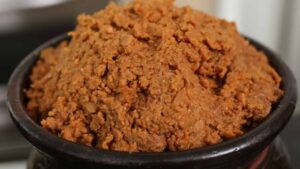
Doenjang, a fermented soybean paste, is a key ingredient in Korean cooking, offering a deep, earthy flavor that is essential for creating authentic Korean dishes. While similar to miso in texture, Doenjang has a stronger, more robust taste that adds complexity to soups, stews, and marinades. This paste is a staple in Korean households and is perfect for infusing dishes with rich, savory depth.
Best Uses for Doenjang
- Doenjang Jjigae (Soybean Paste Stew): A comforting and hearty stew made with vegetables, tofu, and sometimes meat, simmered in a flavorful Doenjang-based broth.
- Marinades for Vegetables or Meat: Mix Doenjang with garlic, ginger, and other seasonings to create a savory marinade for grilling or stir-frying meats and vegetables.
Doenjang’s versatility makes it an indispensable ingredient for bringing the true essence of Korean cuisine into your kitchen.
Kimchi

No Korean pantry is complete without kimchi, a staple fermented vegetable dish that epitomizes Korean cuisine. Traditionally made with napa cabbage, radish, garlic, ginger, and Korean chili flakes (gochugaru), kimchi is seasoned with a complex blend of spices that gives it its signature tangy, spicy, and umami-rich flavor.
Kimchi is not just a delicious side dish; it’s a nutritional powerhouse. Packed with probiotics, it promotes gut health and improves digestion. It’s also a great source of vitamins A, B, and C, along with essential minerals like calcium and potassium, making it an excellent addition to a balanced diet.
Kimchi’s versatility shines in many dishes, such as:
- As a side dish to accompany rice and soup.
- In Kimchi Fried Rice, adding a bold, spicy twist.
- In Kimchi Pancakes (Kimchi-jeon), for a crispy, savory treat.
Whether enjoyed on its own or as a key ingredient, kimchi brings the heart of Korea to every meal.
Curious About How Kimchi and Kimchi Ramen Became So Popular Worldwide? CLICK HERE
Rice (Short-Grain or Sticky Rice)
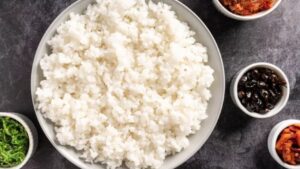
No Korean meal is truly complete without short-grain rice or sticky rice, a staple ingredient in Korean cuisine. This rice variety is known for its slightly sweet flavor and delightfully sticky texture, making it the perfect complement to savory Korean dishes. Whether served as a side or as the main ingredient in iconic recipes, sticky rice is a must-have for creating authentic Korean flavors.
Where to Find Sticky Rice
You can purchase sticky rice at specialty Korean cafes, Asian grocery stores, or online retailers offering authentic Korean ingredients.
Popular Dishes Featuring Sticky Rice
- Kimbap (Korean Sushi Rolls): Rolled with seaweed, fresh vegetables, and proteins for a portable, flavorful meal.
- Tteokbokki (Rice Cakes with Spicy Sauce): A popular street food featuring chewy rice cakes coated in a fiery gochujang-based sauce.
Sticky rice forms the foundation of countless Korean dishes, ensuring every bite is as comforting as it is delicious.
Korean Noodles

Korean cuisine offers a wide variety of noodles, each bringing its unique flavor and texture to the table. From the silky glass noodles (dangmyeon) used in Japchae to the hearty and satisfying ramen noodles perfect for dishes like Spicy Veg Ramen or Spicy Chicken Ramen, there’s something for every noodle enthusiast.
Pro Tip for Noodle Lovers
Stock a variety of Korean noodles in your pantry to create diverse and delicious recipes. Glass noodles are ideal for stir-fried dishes, while ramen noodles are perfect for soups or spicy broths.
Popular Dishes Featuring Korean Noodles
- Japchae: A sweet and savory stir-fried dish with glass noodles, vegetables, and soy-based seasoning.
- Spicy Chicken Ramen: A bold, flavor-packed soup with chewy ramen noodles and a fiery kick.
Whether you crave stir-fry or a comforting bowl of soup, Korean noodles are an essential ingredient for authentic and satisfying meals.
Looking for Ways to Enhance Your Korean Ramen with Sides & Drinks? CLICK HERE
Korean Snacks and Sauces

Beyond traditional staples, Korean snacks and sauces bring an extra layer of flavor and authenticity to your Korean cooking experience. Popular snacks like crispy seaweed sheets are a perfect light and savory treat, while sauces like ssamjang (spicy dipping sauce) and gochujang (fermented chili paste) are essential for creating bold, rich flavors in your dishes.
Where to Find Authentic Snacks and Sauces
For genuine Korean ingredients, visit Wang House Korean Street Food Café in Delhi. They stock a variety of authentic snacks and sauces to help you recreate the taste of Korea at home.
Must-Have Additions
- Seaweed Sheets: Great as a snack or for wrapping rice and vegetables.
- Ssamjang: Perfect as a dipping sauce for grilled meats or vegetables.
- Gochujang: Adds a spicy, umami kick to stews, marinades, and sauces.
These snacks and sauces are indispensable for anyone looking to explore the full spectrum of Korean flavors.
Would you like to learn how to enhance your Korean ramen experience with sides and drinks?
Black Sesame Seeds
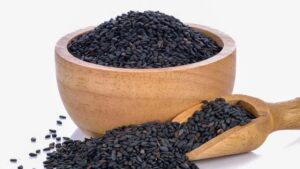
A finishing touch that adds visual appeal and a nutty crunch to Korean dishes. Sprinkle these over rice bowls, noodles, or desserts.
Best Used For:
- Garnishing
- Enhancing texture black sesame seeds are a small but mighty ingredient in Korean cuisine, valued for their nutty flavor, crunch, and visual appeal. These tiny seeds can elevate the presentation and taste of a variety of dishes, adding a touch of elegance and texture to your meals.
Best Uses for Black Sesame Seeds
- Garnishing: Sprinkle over rice bowls, noodle dishes, or soups for a pop of contrast and flavor.
- Enhancing Texture: Incorporate them into desserts like Korean black sesame cookies or use them to coat sticky rice cakes for a delightful crunch.
Whether you’re preparing savory dishes or experimenting with Korean desserts, black sesame seeds provide a versatile and flavorful finishing touch. Keep a jar handy to add that extra layer of nutty richness and sophistication to your culinary creations.
Where to Source Authentic Korean Ingredients in India
To ensure authenticity, sourcing the right ingredients is essential. Many Korean cafes in Delhi, such as Wang House, offer authentic Korean products. You can also explore Asian supermarkets or online retailers.
Tips for Creating Korean Dishes at Home
- Master the Basics: Start with simple recipes like Bibimbap or Kimchi Fried Rice.
- Blend Flavors: Korean cooking often balances sweet, salty, sour, and spicy elements.
- Experiment: Combine Indian ingredients with Korean flavors for unique fusion dishes.
Visit Us At:
- Laxmi Nagar, East Delhi, near Sai Mandir
- NSP (Netaji Subhash Place)
- Gurugram, Haryana
Conclusion
Bringing Korean cuisine into your Indian kitchen is an exciting journey that begins with the right ingredients. By stocking up on essentials like gochujang, sesame oil, and kimchi, you can recreate authentic Korean flavors at home. Whether you’re a beginner or an experienced cook, these ingredients will open up a world of culinary possibilities. For the best Korean ingredients and inspiration, visit Wang House Korean Café and explore the magic of K-food in India!


